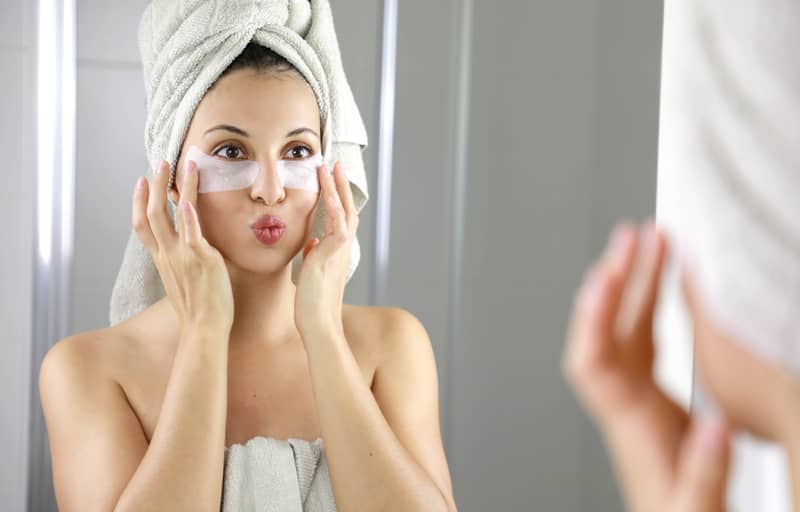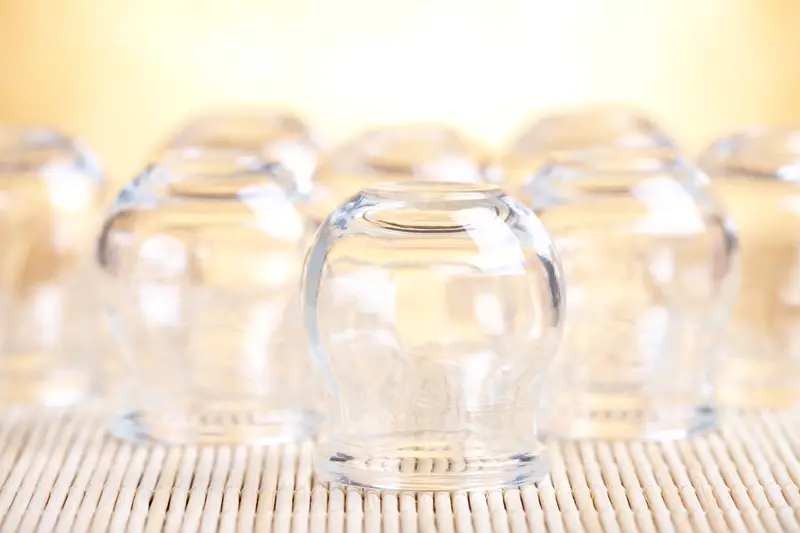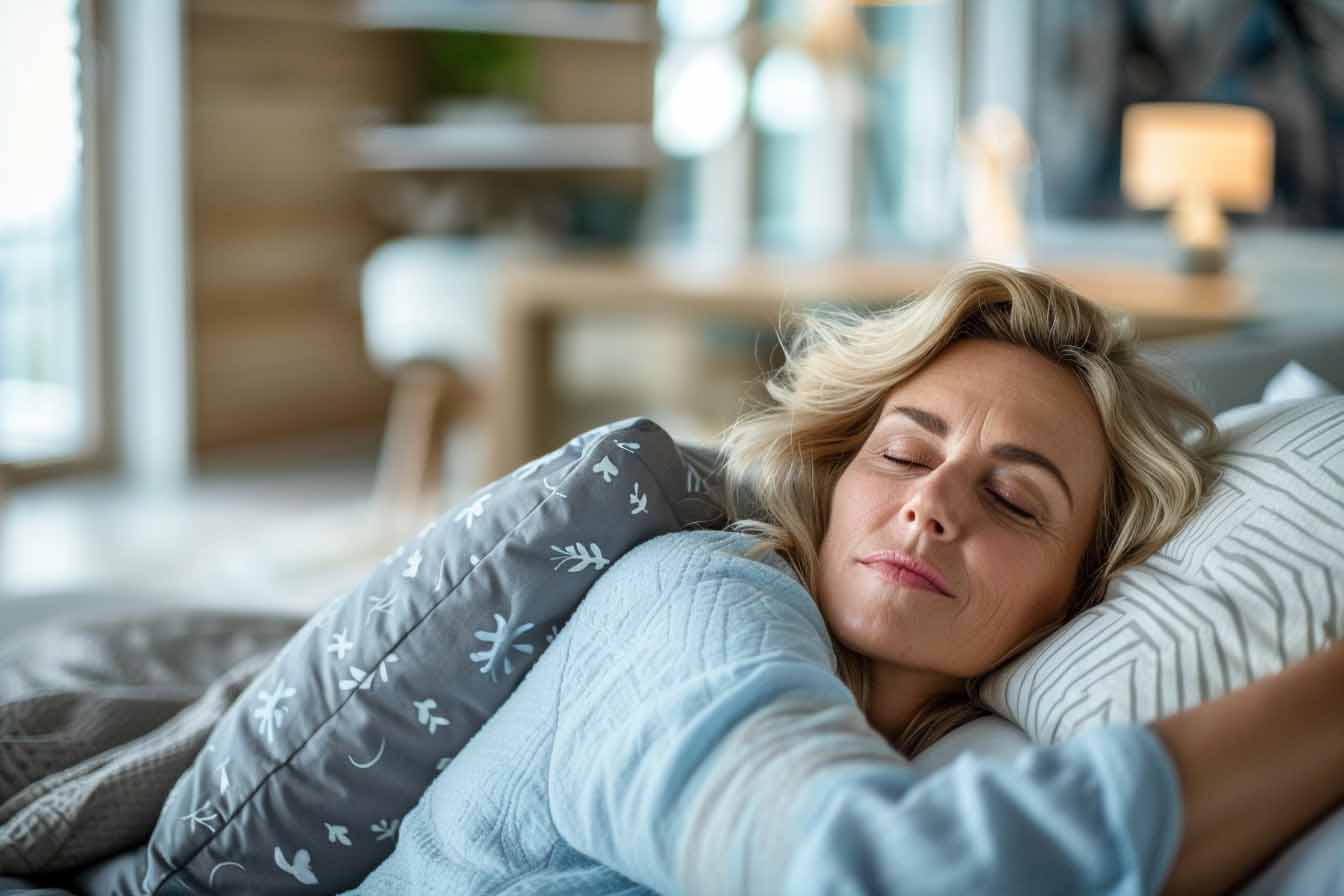As you get older, it’s not unusual to develop slight swelling or puffiness around the eyes. As the muscles and tissues around the eyes weaken, fat that once helped to support the eyes moves into the lower eyelids, causing them to become puffy. Aging skin tends to sag or wrinkle, forming dark circles or bags under the eyes. Also, fluid may begin to accumulate in the space beneath the eyes, making them puffy or swollen.
Shadows or bags under the eyes are usually no more than a cosmetic concern and rarely indicate a more serious medical condition. Massaging the skin around the eyes may improve the tautness of the skin, and there are some simple facial exercises you can do to increase the muscle tone in the face and help prevent the wrinkles that naturally form with age. One of the best remedies is to use acupuncture for eye bags to increase the blood flow to the face and eyes and rejuvenate the skin.
What Causes Bags Under The Eyes?
Apart from aging, other factors contributing to under-eye bags include eating salty foods that lead the body to retain water, smoking tobacco, and not getting enough sleep. If you suffer from allergies such as hay fever, you’ll be familiar with the itching and inflammation that comes with puffiness and under-eye bags.
Medical conditions, such as dermatitis (inflammation of the skin), kidney disease, and thyroid eye disease (inflammation of the eye muscles, eyelids, and tear glands) may also cause under-eye bags. There is also a strong genetic component to the condition, and under-eye bags and swelling tend to run in families.
What Do Bags Under The Eyes Mean In Chinese Medicine?

In Traditional Chinese Medicine (TCM), dark circles and under-eye bags are related to the liver, spleen, and kidneys, which is why many of the best acupressure points for eyes are not located on the face, but on the internal organ meridians. The liver controls blood flow, relieving bags under the eye caused by blood stagnation. The kidneys control aging and hormone secretion, and the spleen is involved in skin metabolism.
TCM classes dark circles and bags under the eyes as either “blue,” “black,” or “brown.” Blue circles are related to eye strain, stress, and lack of sleep and may be caused by cold or poor blood circulation. They can be treated by heating up the body with exercise or massage or by warming the eyes with a steamed towel.
“Black” circles, on the other hand, are the result of sagging skin due to aging or poor diet. The sagging skin causes dark shadows or bags under the eyes. These can be relieved by using acupuncture for eye bags or facial exercises to tone the muscles around the eyes.
For “brown” bags, the cause is usually related to the deposition of melanin caused by sunburn or the overuse of certain cosmetic products. Using the acupressure points for under-eye bags, you can enhance melanin excretion and improve the flow of healthy blood and nutrients to the skin, causing the brown bags to disappear.
Can Acupuncture Help Bags Under The Eyes?
Acupuncture and moxibustion treatments promote blood circulation and stimulate the skin’s original recovery system. Acupuncture for eye bags works because the skin treats the superficial needle insertions as tiny wounds, causing the fibroblasts to produce new collagen fibers, which help to create healthier and more beautiful skin.
In Traditional Chinese Medicine (TCM), dark circles and bags under the eyes result from stagnant blood flow. By working on the meridians of the internal organs, acupuncture adjusts the hormones and metabolism and brings the body into balance. The healing begins from within the body before radiating out to the skin and the face.
Researchers at the Kyung Hee University Hospital in Korea found significant improvements in facial elasticity and mimetic muscle tone among 15 out of 27 patients after Facial Cosmetic Acupuncture (FCA) treatment. If your eyes are tired and swollen and you want to avoid invasive (and expensive) surgical treatments, you may want to consider facial acupuncture for eye bags. Even better, you can try using acupressure for under-eye bags at home.
What Are The Best Acupressure Points For Eye Bags?
Acupoint: KI-3 (Other Names: Kidney-3/Tai Xi/Supreme Stream)
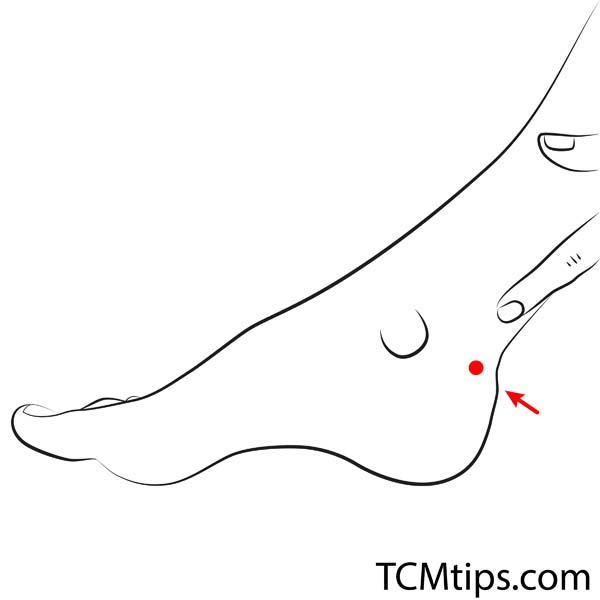
In Chinese Medicine, the kidneys keep the force of yin and yang in balance and govern many of the body’s fluids, including sweat and tears, saliva, and the fluid of the joints. Deficiencies in the kidneys tend to appear in the skin, and an imbalance of fluids may manifest as swelling around the eyes. Stimulating the Tai Xi helps to rejuvenate the skin and make it appear more healthy and youthful.
The KI-3 acupoint is located on the lower leg, in the depression between the inside of the ankle and the Achilles tendon. Gentle pressure here helps to improve circulation and reduce swelling, making it a useful point for acupressure for inflammation of the feet.
Hold your ankle between the thumb and forefinger and stimulate the acupoint by pressing with your thumb.
Acupoint: SP-6 (Other Names: Spleen-6/San Yin Jiao/Three Yin Intersection)
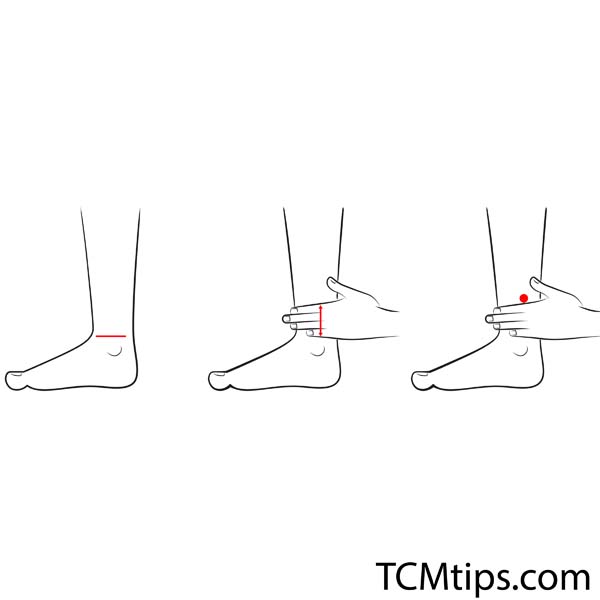
The San Yin Jiao is found on the lower leg, three cun above the medial malleolus, and on the posterior border of the tibia. Located on the spleen meridian, the SP-6 is one of the important acupressure points for spleen inflammation.

When energy flow is lacking, waste products accumulate in the body, and blood circulation becomes poor. This can cause symptoms such as tiredness, dizziness, and pale complexion. If the body’s vital stores of Qi energy are depleted, the blood flow will become stagnant, which can lead to dark circles or bags under the eyes.
To employ the San Yin Jiao in acupressure for under-eye bags, apply continuous firm pressure for two to three minutes at a time, for five to ten cycles.
Acupoint: Liv-3 (Other Names: Liver-3/Tai Chong/Supreme Rush)
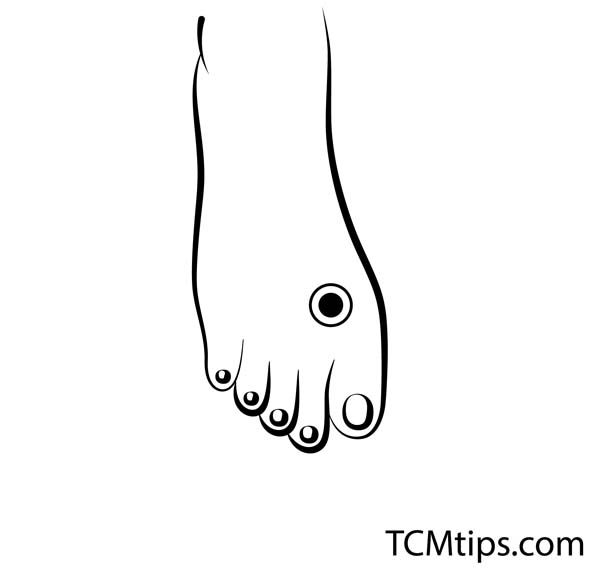
This acupressure point on the liver meridian regulates the vital energy stored in the liver and has an overall calming effect. Activating the Tai Chong can help with tension and depression and relieve headaches. Stimulation here promotes healthy blood circulation and alleviates redness around the eye, making it one of the important acupressure points for dry eyes and under-eye bags.
Although Liv-3 is located on the foot, it’s also considered one of the primary acupoints to use in acupressure for back inflammation.
You can locate the Tai Chong by finding the crease between the bones of the big toe and the second toe and then moving your finger down around two to two-and-a-half centimeters. You may feel a slight pain when you apply pressure on this acupressure point for under-eye bags.
Acupoint: ST-36 (Other Names: Stomach-36/Zu San Li/Leg Three Miles)
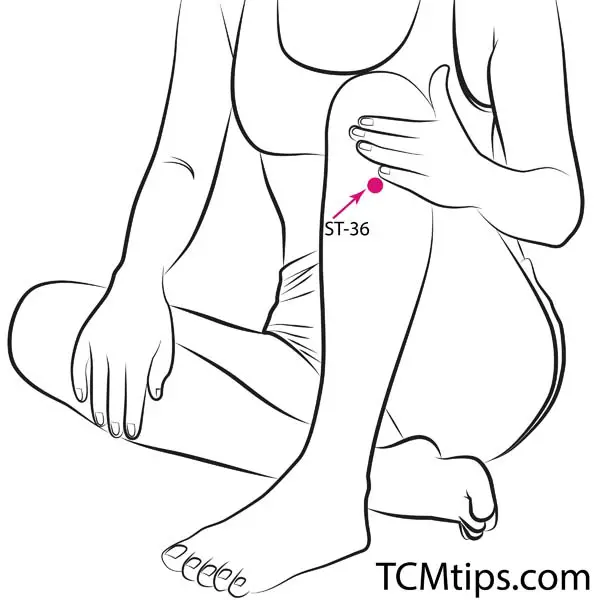
Activating the Zu San Li provides relief from gastrointestinal issues and indigestion, making it one of the primary acupressure points for stomach inflammation. This useful acupoint is located below the knee, one finger-width from the anterior crest of the tibia.
Acupressure at ST-36 expels dampness and cold from the body and stimulates the flow of Qi energy. When Qi energy is depleted, the flow of blood and body fluids becomes stagnant, which can lead to conditions such as under-eye bags.
Sit comfortably and apply firm pressure with the ball of the thumb while breathing deeply.
Acupoint: SP-9 (Other Names: Spleen-9/Yin Ling Quan/Yin Mound Spring)
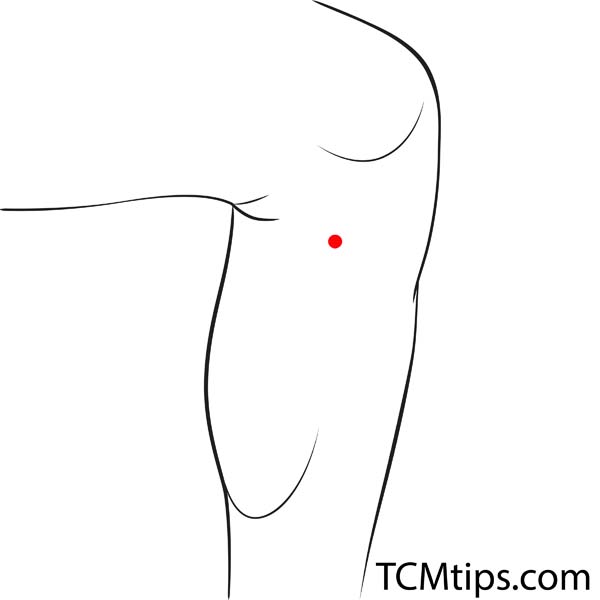
The Yin Mound Spring is another one of the useful acupressure points for under-eye bags on the spleen meridian. Stimulation here will help to improve the flow of fluids throughout the body.
If you bend the knee, you can find this acupoint on the inner side of the leg, in the depression at the end of the tibia. Activating SP-9 resolves dampness and swelling around the knees, making it an excellent site for acupressure for knee inflammation.
Sit on a chair and apply firm pressure for a few seconds at a time.

Try our Anti-Aging Gua Sha Tool designed to bring out your skin’s natural glow.
Best Gua Sha Product- Anti-Aging: The tool is designed to target 11 specific aging signs such as wrinkles and sagging skin. By following the 7-step routine, users can improve skin firmness and reduce fine lines naturally.
- Enhances Skincare Routine: It works effectively with serums and lotions, boosting absorption and efficacy of skincare products.
- Visible Skin Improvement: Users can expect a smoother complexion, reduced puffiness, and a more youthful appearance.
 P. Sze
P. Sze 